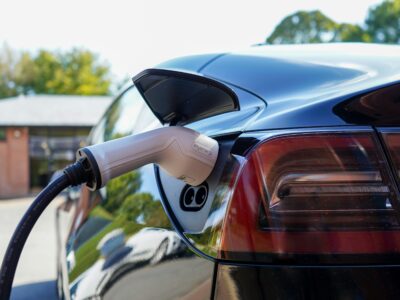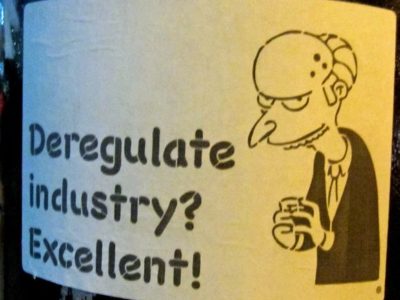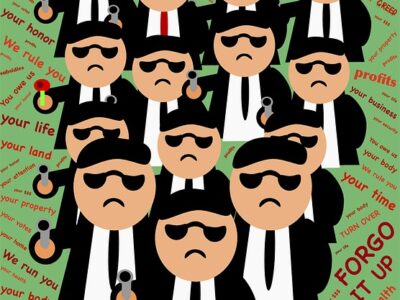Why do we have NEPA?
Examining the reasons why we might have environmental review can inform reform efforts
Reform, or even elimination, of environmental review for federal agency actions under the National Environmental Policy Act (NEPA) is a hot topic in the policy world right now – particularly with the Trump Administration making a range of significant changes to try and reduce the scope of NEPA. But if we want to have a serious conversation about environmental review, it’s important for us to talk about what we think environmental review does, and what it should do...
CONTINUE READINGOur 2012 Report Predicted the Future of Electric Vehicles in 2025: How Off Were We?
Time to open up the 2012 time capsule PDF
Back in 2012, CLEE and the Emmett Institute released a report called “Electric Drive by ’25,” with the relatively bold subtitle “How California Can Catalyze Mass Adoption of Electric Vehicles by 2025.” The report cited 2011-12 EV sales as reason for optimism on achieving mass adoption by 2025: Early results from the introduction of new electric vehicles to the U.S. market have been promising, with sales of both Nissan LEAFs and Chevy Volts outselling the po...
CONTINUE READINGRegulatory Rollbacks: What to Expect
A replay of 2017? Or maybe something more radical? You can probably guess the answer.
Trump’s opening round of executive orders called for rollbacks of many environmental regulations, including almost everything relating to climate. His EPA Administrator followed up with a long list of projected rollbacks. Rollbacks were a major feature of his first term, so we have some idea of what to expect. But 2025 isn’t 2017. There are likely to be some major differences, with more extreme legal positions and formal rollbacks taking second place to efforts to ...
CONTINUE READINGThe Downsides of Ping Pong Governance
Judicial review, by moderating policy swings, may be important to facilitating long-term investment
I’ve written about debates over permitting reform and other versions of regulatory streamlining to support the development of infrastructure that we need to address climate change. Another view, well articulated by Nicholas Bagley at University of Michigan, is that the problem is more fundamental: Excessive focus on governmental procedures and process, reinforced by searching judicial review, has paralyzed government and therefore undermined achieving a range of goal...
CONTINUE READINGThe CRA and the filibuster
Expanding the scope of the CRA might also result in weakening the filibuster
This is the third in a series of blog posts examining the possible application of the Congressional Review Act (CRA) to California’s waivers under the Clean Air Act allowing the state to issue its own emissions standards for motor vehicles. The first post is here. The second post is here. Another possible implication of applying the CRA to California’s waivers under the Clean Air Act is that it might open the door to a severe curtailment of the Senate filibust...
CONTINUE READINGThe CRA and permits
Applying the CRA to the California waivers might open the door to Congressional review of permits more broadly
This is the second in a series of blog posts examining the possible application of the Congressional Review Act (CRA) to California’s waivers under the Clean Air Act allowing the state to issue its own emissions standards for motor vehicles. The first post is here. The basic legal question at the heart of the dispute over whether California’s Clean Air Act waivers are subject to the CRA are whether those waivers are “rules” within the scope of the CRA. The...
CONTINUE READINGLives in the Balance: Infectious Disease and the Trump Administration
The Administration has made serious inroads on safeguards against infectious disease.
The federal government has traditionally worked to limit the risks and impacts of epidemics. At a time when scientists are increasingly worried about a possible H1N5 epidemic like the 1917 flu, the erosion of the U.S. public health system by the current Administration creates particular ground for alarm. Disease control, like many other traditional government activities, has been under a MAGA-driven onslaught. Earlier this year, the Trump Administration moved to des...
CONTINUE READINGWhat is the scope of the Congressional Review Act?
Possible implications of expanding the CRA to the California waivers, and beyond
The Congressional Review Act (CRA) provides a tool for majorities in the House and Senate, along with the President, to overturn a recently promulgated agency regulation, and to legislatively prohibit promulgation of a “substantially the same” regulation in the future. By its nature – since it requires Presidential approval of the relevant joint Congressional resolution – the CRA primarily applies when a new President wishes to overturn recent regulatory action...
CONTINUE READINGAnd The Grift Goes On – This Time on Public Lands
Trump's alleged plan for affordable housing on federal property is one more brick in a wall of corruption.
Today in the Department of FFS. The Wall Street Journal breathlessly reports, Trump Wants to Build Homes on Federal Land. Here’s What That Would Look Like. And then, not content with a series of graphics about where this housing could be, it also put out a big op-ed from Interior Secretary Doug Burgum and HUD Secretary Scott Turner entitled Federal Land Can Be Home Sweet Home. Can we just stop this? I expect the Journal’s op-ed page to run propaganda for the ad...
CONTINUE READINGCEQA and infill development
SB 607 is an excellent beginning for reforming CEQA to facilitate residential infill development
The state legislature continues its efforts to facilitate more housing production in California. Among the most significant bills being considered this session in Sacramento is SB 607, which would provide some substantial changes to how environmental review under the California Environmental Quality Act (CEQA) would operate. Overall, this is a bill that would provide important and generally beneficial reforms to CEQA, though there are ways in which it could be made e...
CONTINUE READING







